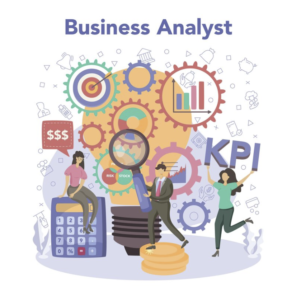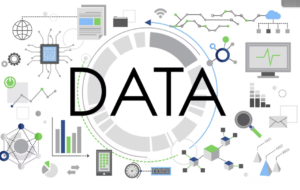In the digital age, data has emerged as a valuable currency, and businesses that harness its power strategically are finding themselves at the forefront of innovation and success. At the heart of this transformation lies data analytics, a process that involves examining, interpreting, and drawing insights from data to inform decision-making. In this comprehensive guide, we’ll explore, in simple terms, how data analytics helps businesses thrive, providing a roadmap for organizations seeking to unlock the full potential of their data.
The Basics: What is Data Analytics?
Before delving into its impact on businesses, let’s establish what data analytics entails. Data analytics is the process of examining raw data to uncover hidden patterns, draw conclusions, and make informed decisions. It involves cleaning and preparing data, analyzing it using statistical methods, and presenting findings in a way that is accessible and actionable.

The Transformative Power of Data Analytics:
1. Informed Decision-Making:
Simplified Overview:
Data analytics equips businesses with the tools to make decisions based on evidence and insights derived from data.
Importance:
In a rapidly changing business landscape, making informed decisions is crucial. Data analytics provides a systematic approach to gathering insights, helping organizations navigate uncertainties and make decisions that align with their goals.
2. Understanding Customer Behavior:
Simplified Overview:
Data analytics enables businesses to analyze customer data, understand preferences, and tailor products and services accordingly.
Importance:
In the era of customer-centricity, understanding customer behavior is paramount. Data analytics helps businesses identify trends, preferences, and pain points, allowing for personalized and targeted approaches that enhance customer satisfaction and loyalty.
3.
Operational Efficiency:Simplified Overview:
Data analytics identifies inefficiencies, streamlines processes, and optimizes resource allocation, leading to improved operational efficiency.
Importance:
By analyzing operational data, businesses can identify bottlenecks, reduce waste, and enhance overall efficiency. This is particularly important for cost reduction and ensuring resources are utilized effectively.
4. Strategic Planning:
Simplified Overview:
Data analytics aids in strategic planning by providing insights into market trends, competition, and potential opportunities.
Importance:
Businesses can use data analytics to forecast market trends, assess the competitive landscape, and identify areas for growth. This information is invaluable for developing and adjusting strategic plans to stay ahead in the market.
5. Risk Management:
Simplified Overview:
Data analytics helps businesses assess risks, anticipate challenges, and implement proactive measures for risk management.
Importance:
Understanding and managing risks is a critical aspect of business strategy. Data analytics allows organizations to assess potential risks comprehensively, aiding in decision-making to mitigate and navigate uncertainties.
6. Improved Marketing Strategies:
Simplified Overview:
Data analytics informs marketing strategies by providing insights into the effectiveness of campaigns, customer engagement, and market trends.
Importance:
By analyzing data from marketing efforts, businesses can refine their strategies, allocate budgets more effectively, and tailor campaigns to target audiences. This leads to better ROI and more impactful marketing initiatives.
Simple Steps in Implementing Data Analytics:
1. Define Objectives:
Clearly outline the business objectives you aim to achieve through data analytics. Whether it’s improving customer satisfaction, optimizing operations, or enhancing marketing effectiveness, having a clear goal guides the analytics process.
2. Collect Relevant Data:
Identify and collect relevant data sources. This could include customer data, sales data, website analytics, or any other data that aligns with your objectives.
3. Clean and Prepare Data:
Ensure that the data is accurate and ready for analysis. This involves cleaning, organizing, and transforming data into a format suitable for analysis.
4. Choose Analytical Tools:
Select appropriate analytical tools based on the nature of your data and analysis goals. This could range from spreadsheet software to more advanced analytics platforms.
5. Conduct Analysis:
Use statistical methods, machine learning algorithms, or other analytical techniques to derive insights from the data. This step involves exploring patterns, correlations, and trends.
Also Read: Big Data Analytics Tools: Navigating the Seas of Information
6. Visualize Findings:
Present the findings in a visual format using charts, graphs, or dashboards. Visualization makes complex data more accessible and facilitates better understanding among stakeholders.
7. Iterate and Improve:
Data analytics is an iterative process. Continuously assess the impact of your insights on business objectives, gather feedback, and refine your analytics approach for ongoing improvement.
Real-World Applications of Data Analytics:
1. E-Commerce:
E-commerce platforms use data analytics to analyze customer behavior, optimize the user experience, and personalize product recommendations.
2. Healthcare:
In healthcare, data analytics helps in patient care management, resource allocation, and predictive analytics for disease outbreaks.
3. Finance:
Financial institutions leverage data analytics for fraud detection, risk management, and personalized financial services.
Overcoming Challenges in Data Analytics:
1. Data Quality:
Ensure that the data used for analysis is accurate, complete, and reliable. Address data quality issues to maintain the integrity of insights.
2. Data Security:
Implement robust data security measures to protect sensitive information. Safeguarding customer data is essential for building trust.
The Future of Data Analytics:
As technology advances, the future of data analytics holds exciting possibilities. Artificial intelligence and machine learning will play an increasingly prominent role, automating complex analyses and uncovering insights at unprecedented speeds.
Also Read: Big Data in Cloud Computing: Unleashing the Power of Data
In Conclusion:
In conclusion, data analytics is not just a tool; it’s a strategic imperative for businesses looking to thrive in the data-driven era. From making informed decisions and understanding customer behavior to optimizing operations and improving marketing strategies, the applications of data analytics are vast and impactful. By embracing the power of data analytics, businesses can unlock a world of insights, drive innovation, and position themselves for sustained success in an increasingly competitive and dynamic business landscape.









